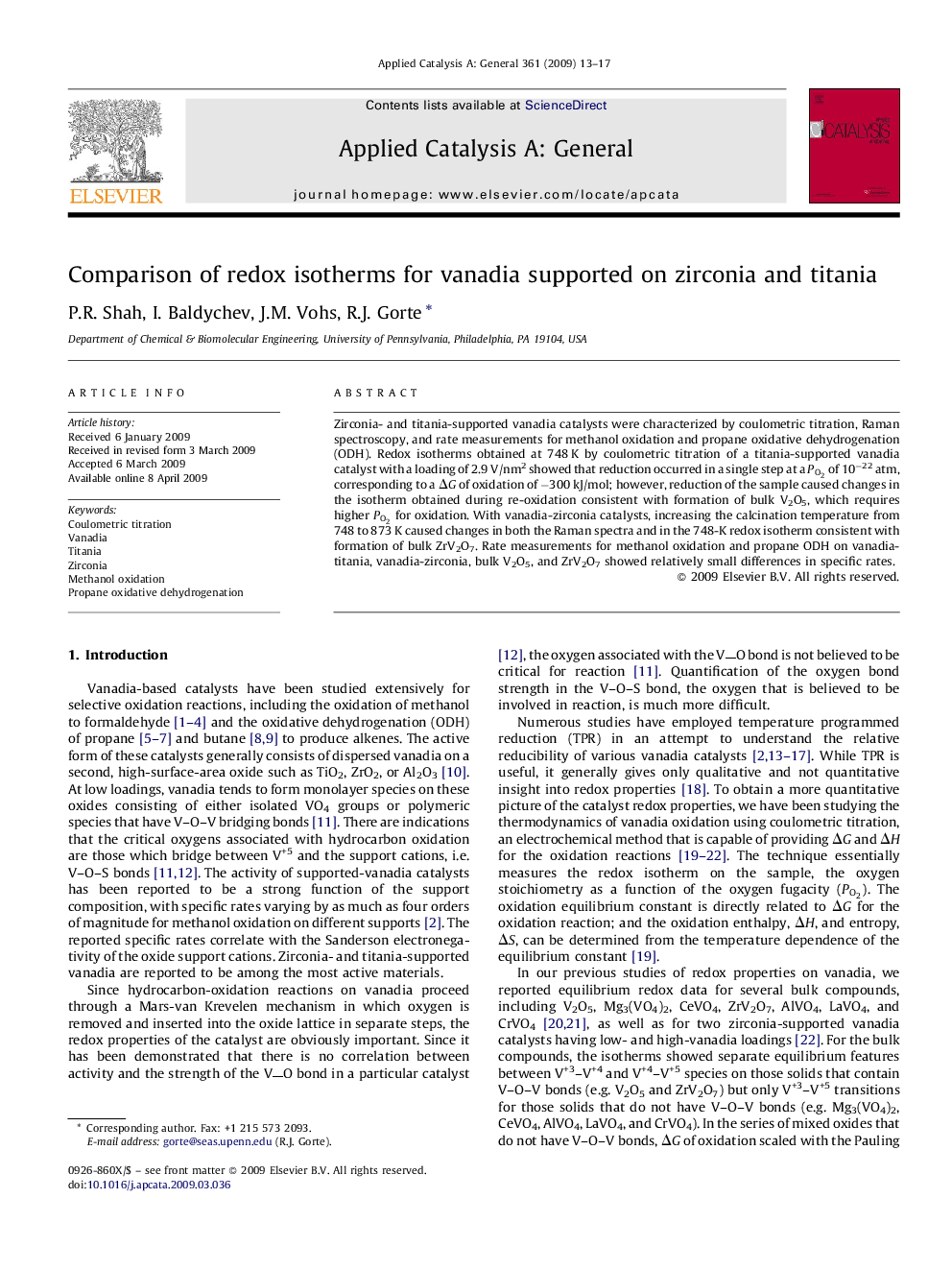| Article ID | Journal | Published Year | Pages | File Type |
|---|---|---|---|---|
| 42448 | Applied Catalysis A: General | 2009 | 5 Pages |
Zirconia- and titania-supported vanadia catalysts were characterized by coulometric titration, Raman spectroscopy, and rate measurements for methanol oxidation and propane oxidative dehydrogenation (ODH). Redox isotherms obtained at 748 K by coulometric titration of a titania-supported vanadia catalyst with a loading of 2.9 V/nm2 showed that reduction occurred in a single step at a PO2PO2 of 10−22 atm, corresponding to a ΔG of oxidation of −300 kJ/mol; however, reduction of the sample caused changes in the isotherm obtained during re-oxidation consistent with formation of bulk V2O5, which requires higher PO2PO2 for oxidation. With vanadia-zirconia catalysts, increasing the calcination temperature from 748 to 873 K caused changes in both the Raman spectra and in the 748-K redox isotherm consistent with formation of bulk ZrV2O7. Rate measurements for methanol oxidation and propane ODH on vanadia-titania, vanadia-zirconia, bulk V2O5, and ZrV2O7 showed relatively small differences in specific rates.
Graphical abstractThe thermodynamic redox properties of zirconia- and titania-supported vanadia were characterized by coulometric titration in order to understand the impact that these properties have on methanol oxidation and propane ODH.Figure optionsDownload full-size imageDownload as PowerPoint slide
